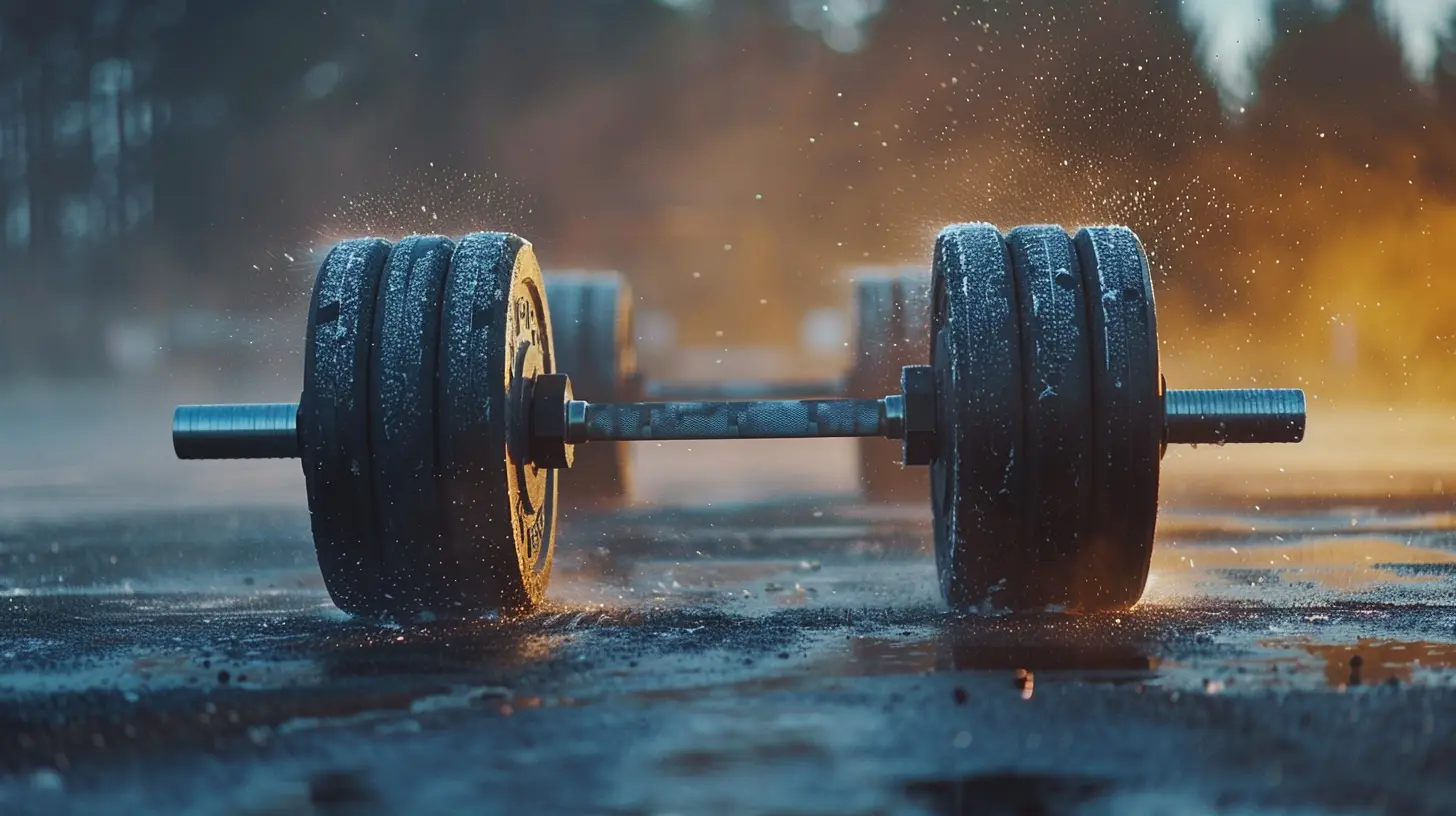The Importance of Warm-Ups and Cool-Downs in Strength Training
6 October 2025
Let’s be real—most of us are guilty of skipping warm-ups and cool-downs at the gym. You walk in, eager to lift heavy or smash a PR, and the idea of stretching or doing light cardio seems like a waste of time, right? But here’s the truth: ignoring warm-ups and cool-downs is like driving a car without warming up the engine or slamming the brakes from 60 to 0 without letting it slow down naturally. It might not crash immediately, but damage accumulates. So if you’re serious about strength training—and staying injury-free—this is something you can’t afford to ignore.
In this article, we’re diving deep into the underrated heroes of strength training: warm-ups and cool-downs. We’ll chat about why they matter, how they affect your performance, and the best way to actually do them.
Why Warm-Ups Matter in Strength Training
Prepping the Body for Action
Think of warming up like gently waking your body out of bed instead of throwing cold water on its face. When you warm up, you're gradually increasing your heart rate, blood flow, and body temperature. That means your muscles become more elastic, your joints move more freely, and your nervous system gets fired up.This preps both your body and your mind for the "heavy lifting" ahead, reducing the risk of tears, strains, and cramps. It’s like giving your system a heads-up that hard work is on the way.
Injury Prevention 101
You wouldn’t jump into a sprint without loosening up those hammies, right? Same goes for lifting. Whether it's squats, deadlifts, or presses, strength training puts serious stress on muscles, tendons, and ligaments.A proper warm-up increases synovial fluid in your joints (which acts like motor oil), sharpens coordination, and improves range of motion. All that adds up to one thing—fewer injuries. And trust me, nothing messes up progress like being sidelined by a pulled muscle.
Boosting Performance
Warm-ups aren’t just about safety—they help you perform better. When your body’s warmed up, your muscles contract more forcefully and efficiently. Your nervous system also fires faster, which translates to better coordination and more power output.Ever notice your first heavy set feels horrible if you didn’t warm up properly? That’s your body yelling, “Hey, I wasn’t ready!” Give it a five-to-ten-minute heads-up, and you’ll lift heavier with more control.
The Anatomy of a Proper Warm-Up
A proper warm-up isn’t just a few arm circles or half-hearted jumping jacks. It has structure and intent. Here’s a simple breakdown:1. General Warm-Up (5–10 mins)
Start with light aerobic activity like jogging, cycling, jumping rope, or bodyweight exercises. The goal? Get your blood pumping and body temperature up.2. Dynamic Stretching (5–10 mins)
This is where you move while you stretch—think leg swings, hip circles, arm circles, and walking lunges. Dynamic stretches activate the muscles you’re about to use. Save static stretches for later.3. Movement-Specific Warm-Up (5–10 mins)
Now prep with lighter sets of the actual lift. For example, if you’re doing squats, do a few sets with just the bar or light weight. Don’t skip this. It tells your muscles and joints, “Here’s the blueprint for what we’re doing.”
Don’t Skip the Cool-Down: Here’s Why
So you’ve crushed your workout—well done! But before you sprint for the showers or sink into the couch, it’s cool-down time.Skipping your cool-down is like slamming your laptop shut while it’s still uploading something important. Leaving your body in a post-lift adrenaline rush without easing it down can make you feel stiff, sore, and drained later.
Promotes Recovery
After a strength session, your heart rate is elevated, and your muscles are loaded with waste products like lactic acid. Cooling down—through light movement like walking or stretching—helps flush that out. That means less soreness the next day.Helps Flexibility and Mobility
Cool-downs are the best time to work on flexibility. Your muscles are warm and pliable, making it the perfect time for static stretches. Stretching now can improve your range of motion for future lifts and keep your joints happy and healthy.Mental Decompression
Workouts can be intense—physically and mentally. A cool-down gives your brain time to chill, reflect, and shift back into rest mode. It’s a mindful way to end your session and re-center.
What a Smart Cool-Down Looks Like
A cool-down doesn’t have to be fancy or long. It just needs to be intentional. Here's a solid format:1. Light Cardio (3–5 mins)
Bring your heart rate down slowly with light walking, cycling, or even a light row. You’re just easing off the gas.2. Static Stretching (5–10 mins)
Now’s the time for those long, slow stretches—hamstrings, quads, calves, chest, shoulders, hips—especially the muscles you just used. This facilitates muscle recovery and promotes flexibility.3. Breathing and Relaxation (1–2 mins)
Deep breathing or mindfulness exercises can help you shift from the “fight or flight” mode of intense training into “rest and recover” mode. It’s like giving your nervous system a big ol’ exhale.What Happens If You Skip Both?
You might get away with it once, maybe even a few times. But over time, skipping warm-ups and cool-downs can lead to:- Increased injury risk
- Reduced range of motion
- Poor muscle recovery
- Joint pain or tightness
- Decreased long-term performance
You wouldn’t skip brushing your teeth just because you’re in a hurry, right? Treat your body with the same long-term respect. Your knees, shoulders, and spine will thank you later.
Tailoring Warm-Ups and Cool-Downs to Your Goals
Not every body is the same, and not every workout needs the same prep. The key is personalization.Powerlifters might focus more on joint and nervous system prep. Think multiple ramp-up sets with the bar and plenty of hip mobility work.
Bodybuilders may benefit from more blood flow and light pump work, like cable exercises and dynamic stretches.
CrossFitters might need a mix of aerobic conditioning, mobility drills, and technique warm-ups for complex movements.
Listen to your body. Notice what makes your lifts feel smoother or where tightness creeps in. Your warm-up and cool-down routines should serve your goals, not be a cookie-cutter template.
Quick Warm-Up & Cool-Down Examples
Let’s say it’s “Leg Day,” and you’re squatting and deadlifting. Here’s a sample warm-up and cool-down program:✅ Warm-Up
- 5 min walk on incline treadmill or rower- 20 bodyweight squats
- 15 walking lunges (each leg)
- 10 hip circles each direction
- 2 ramp-up sets of squats (bar only + 50% working weight)
✅ Cool-Down
- 5 min light cycling or walk- Hamstring stretch – 30 sec per leg
- Quad stretch – 30 sec per leg
- Pigeon pose – 30 sec per side
- Deep breathing – 2 min
Fast, simple, and effective.
Warm-Ups and Cool-Downs: The Long Game
Strength training isn’t just about adding weight to the bar. It’s about building a resilient, healthy body that performs well for years—not just today. Warm-ups and cool-downs play a huge role in that journey.They might not be sexy. No one brags about their killer warm-up game. But here’s the secret: the people who take them seriously are often the ones lifting longer, stronger, and pain-free.
So the next time you’re tempted to skip the boring part, remember—you’re not wasting time. You’re investing in future gains.
Final Tips and Takeaways
- Treat warm-ups and cool-downs as essential parts of your training—not optional.- Customize them based on your workout and your body’s needs.
- Focus on movement quality, mobility, and control.
- Keep it simple, consistent, and intentional.
Your body isn’t a machine—it’s a system that thrives on preparation and recovery. Treat it like one, and it’ll reward you with better lifts, faster gains, and far fewer injuries.
all images in this post were generated using AI tools
Category:
Strength TrainingAuthor:

Easton Simmons
Discussion
rate this article
1 comments
Zevros Erickson
Great article! Warm-ups and cool-downs are crucial for optimal performance and injury prevention in strength training. Taking the time to properly prepare your body and recover afterwards truly makes a difference in your overall progress and health. Keep pushing!
October 18, 2025 at 3:16 AM

Easton Simmons
Thank you for the compliment! I'm glad you found the article helpful. Warm-ups and cool-downs really are essential for optimal performance and injury prevention. Keep training smart!

![The Grit and Glory of [Player Name]: What Drives Them to Succeed](/pictures/blog/small/the-grit-and-glory-of-player-name-what-drives-them-to-succeed_4.webp)
